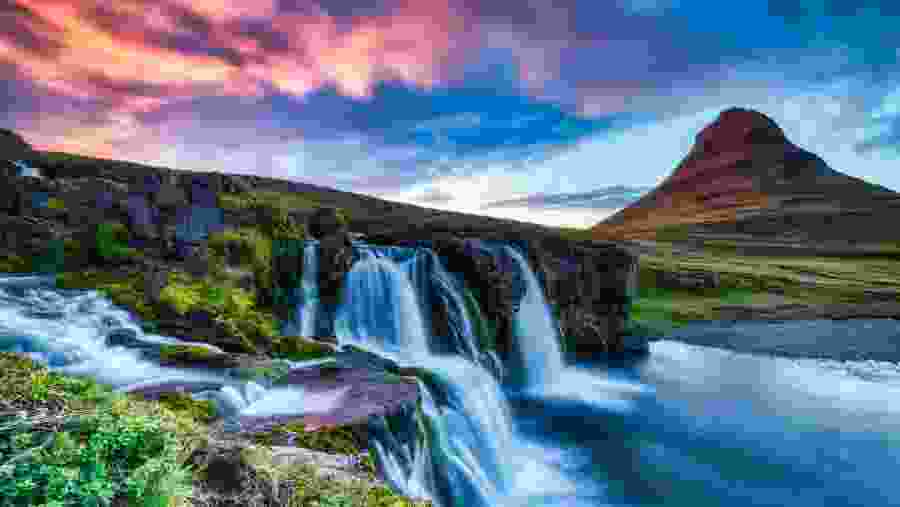12-Hour Private Bespoke Snaefellsnes Peninsula Tour
Highlights
Snæfellsnes
nature, trekking, sightseeing
Private Tour
12 Hours
Easy
English, French, German, Icelandic, Spanish
Languages
English, French, German, Icelandic, Spanish
Description
Venture to this private tour at Snaefellsnes Peninsula also known as a miniature version of Iceland, this peninsula offers everything Iceland is famous for: lava fields, geothermal areas, volcanoes, glaciers, stunning views, wildlife, and rich history.
Itinerary
-
Ytri Tunga Beach
- This place is one of the best in Iceland to spot a few seals lounging on the reefs.
- Ytri-Tunga is situated in the southern part of Snæfellsnes. There used to be a big farm in the area, and the massive beach, with its seal colonies, was a part of it.
- Today, the area is known for its beauty and beautiful animals. Unlike most other beaches in Iceland, the Ytri-Tunga beach has white sand.
- The two most common seal species in Iceland are the Harbor seals and Gray seals. However, if you are lucky, you can spot Harp seals, Bearded seals, Hooded seals, and Ringed seals. They do not breed in Iceland, however, and thus don’t spend much time here.
-
Búðakirkja Church
- Black churches are not uncommon in Iceland, but Búðakirkja is probably the most picturesque of them.
- The church is in the Búðir hamlet, which sits in the Búðahraun lava field. The area has a natural harbor and was one of Iceland’s most important commercial hubs in the 17th and 18th centuries.
- The first church in the area was built in 1703. It was a small, turfed church with a cemetery, but funerals have been held in the church since 1705. It slowly fell into disrepair, and the Danish king finally abolished it in 1816 due to its condition.
- Widow Steinunn Sveinsdóttir lived in Búðir in the middle of the 19th century and applied for permission to rebuild the church in the area. She paid for the church’s construction, which still stands in Búðir today.
- Construction was finished in 1848, but it wasn’t consecrated until 1851.
- As happens with such old buildings, it has gone through many changes. However, in 1987, the National Museum and the Icelandic Heritage Institution had it renovated to its original look with the help of specialists.
- The church is still used today and seats 50 people. It is popular for weddings and concerts, but you can also sometimes attend a mass there. It has no central heating, running water, or toilet.
-
Arnarstapi
- Arnarstapi is a small fishing village at the foot of the Snæfellsjökull glacier.
- The coastline is dramatic, with rock formations like Gataklettur and the Stone Bridge. Arnastapi is also a paradise for bird watchers as the surrounding cliffs are popular among various bird species.
- The fishing village was founded in 1565 as a trading post of the Danish Crown during the trading monopoly. Danish agents had custodial power over Arnarstapi in the 17th and 18th centuries and commercial rights over nearby lands formerly owned by Helgafell Monastery.
- Bárðar Saga Snæfellsáss inspired the Arnarstapi and the nearby Hellnar place names. The Icelandic Saga relates the story of Bárður, a half-human, and half-ogre.
- One of the oldest houses in Arnarstapi, Amtmannshús (The Danish Prefect’s Residence) is also one of the oldest houses in Iceland. It was built in 1774-1787.
-
Djúpalónssandur Beach
- Close to Arnarstapi is Djúpalónssandur Beach. Meaning Deep Lagoon’s Sand, the beach was once the home to about sixty fishing boats. Despite the name, the beach is by a relatively shallow and sandy bay, which made it easy to land a ship.
- The nearby creek Dritvík was also a fishing station. It is believed that men started sailing from Dritvík sometime in the 16th century, and at most, about 600-700 men fished from there.
- Gatklettur (Holey-Rock – and not to be confused with the one in Arnarstapi) is in Djúpalónssandur and by it is a beautiful little pond called Svörtulón.
- Fishermen believed the beach was haunted, and there’s even a cave called Draugahellir or Ghost Cave. Another interesting site is Tröllakirkja, Troll Church.
- On the beach are four lifting stones used to test the strength of those who wanted to become fishermen. Amlóði (sluggard) is the lightest one at 23 kg.
- Second is hálfdrættingur (half the man) at 54 kg, then there’s hálfsterkur (half the strength) at 100 kg, and the fullsterkur (fully strong) at 154 kg. To be considered good enough to work on the boats, you would have to be able to lift hálfsterkur to hip height.
- The Grimsby fishing trawler Epine (GY7) remains on the beach. It was wrecked on March 13, 1948.
-
Mt Kirkjufell
- The famous Kirkjufell mountain is a place of excellent photo opportunities.
- The picturesque mountain is 463 m tall and is climbable, but this should not be done without an experienced guide.
- The mountain got incredibly famous when it was used as the Arrowhead Mountain in the TV series Game of Thrones.
What's Included
What's Excluded
Know Before You Go
What To Bring
Meeting Point
Cancellation Policy
-
For cancellations within 24 hours before the tour -
Refund of 50% of the tour price.
Price
| The Group Size and Price | |
|---|---|
| 1 to 8 | /group |
| 9 to 18 | /group |
|
This is a private tour |
|





